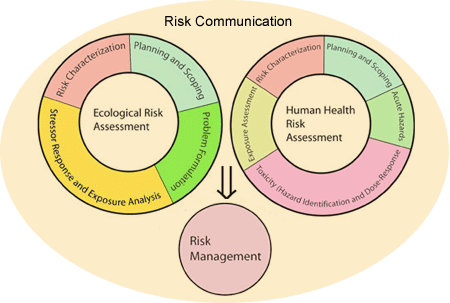Risk Communication
Risk communication![]() Risk communicationInteractive exchange of information about (health or environmental) risks among risk assessors, managers, news media, interested groups, and the general public. is the process of informing people about potential hazards to their person, property, or community. Scholars define risk communication as a science-based approach for communicating effectively in situations of high stress, high concern or controversy.
Risk communicationInteractive exchange of information about (health or environmental) risks among risk assessors, managers, news media, interested groups, and the general public. is the process of informing people about potential hazards to their person, property, or community. Scholars define risk communication as a science-based approach for communicating effectively in situations of high stress, high concern or controversy.
From the risk manager's perspective, the purpose of risk communication is to help residents of affected communities understand the processes of risk assessment and management, to form scientifically valid perceptions of the likely hazards, and to participate in making decisions about how risk should be managed. Risk communication tools are written, verbal, or visual statements containing information about risk.
They should put a particular risk in context, possibly add comparisons with other risks, include advice about risk reduction behavior, and encourage a dialogue between the sender and receiver of the message. The best risk communication occurs in contexts where the participants are informed, the process is fair, and the participants are free and able to solve whatever communication difficulties arise. Ideally, risk communication is a two-way conversation in which an agency or organization informs, and is informed by, affected community members.

Below are links to a few risk communications tools used by EPA scientists to inform decisions makers:
Note: Also refer to the citizen guidance page for additional materials.
